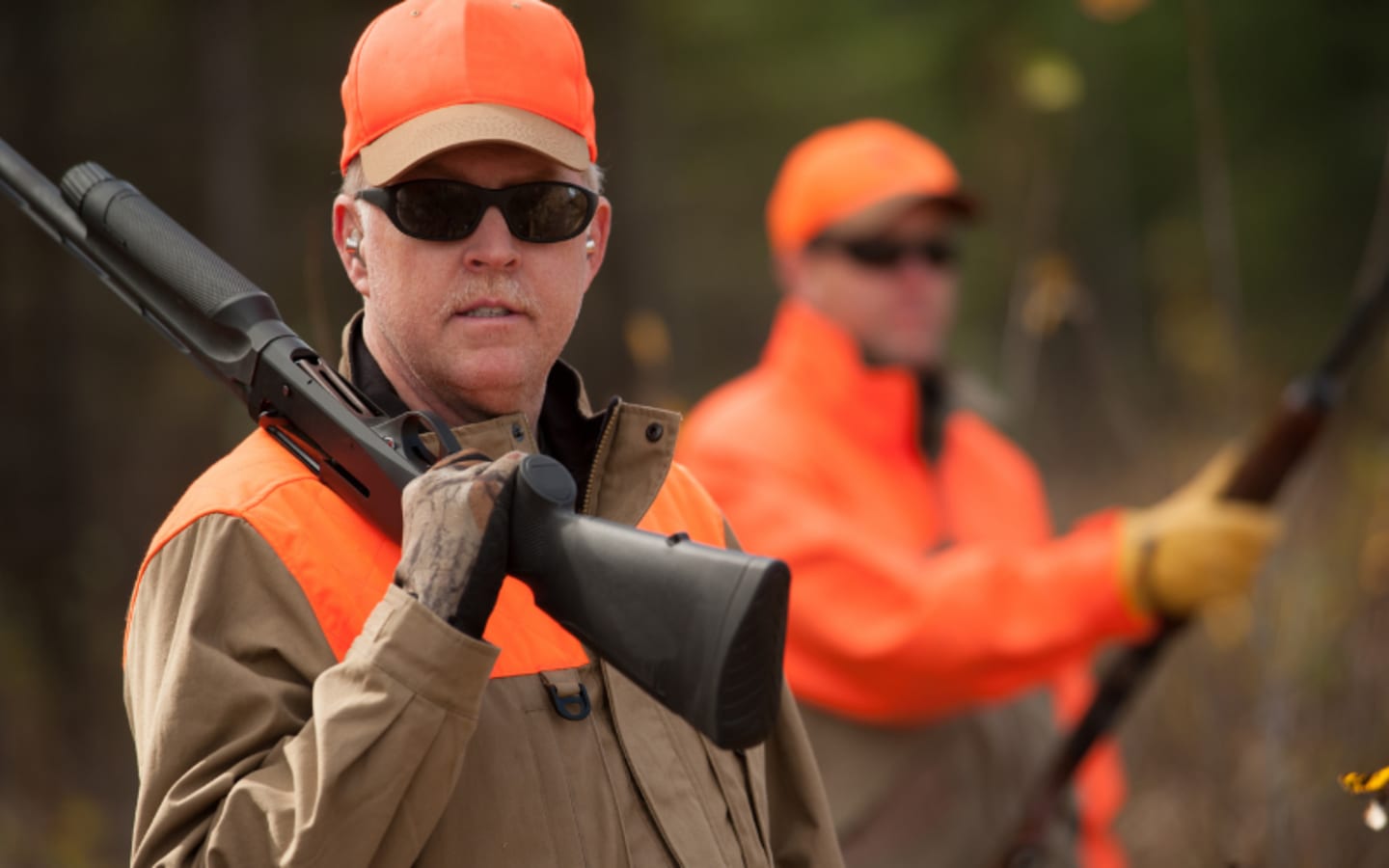As summer fades and the crisp air of fall settles over Wisconsin, hunters and trappers across the state gear up for one of the most exciting times of the year. The Wisconsin Department of Natural Resources (DNR) has released its 2025 fall hunting and trapping forecasts, offering a detailed look at what to expect when pursuing popular game species like deer, bear, turkey, upland game birds, migratory birds, and furbearers. These forecasts, packed with practical information, are a must-read for anyone planning to hit the field this season. Based on a mix of science, field data, and expert insights, they provide a roadmap for a successful and rewarding experience in Wisconsin’s vast outdoors.
A Season Built on Tradition and Preparation
For many, the lead-up to hunting season is as much a part of the experience as the hunt itself. It’s a time for sharpening skills, checking gear, and scouting the land for signs of game. Whether it’s sighting in a rifle, practicing calls, or walking familiar trails, these rituals connect hunters to the land and to each other. The DNR’s forecasts add to the excitement, offering insights into what this year’s seasons might hold. From family traditions passed down through generations to new adventures with friends, the fall season is a time to create memories in the woods, fields, and wetlands of Wisconsin.
The DNR’s 2025 forecasts cover a range of species, each with its own unique opportunities and challenges. These reports are grounded in data from federal and local species surveys, ongoing DNR research, weather patterns, and input from advisory committees and field staff. While they’re not guarantees, they provide a solid foundation for planning your hunts. Alongside species-specific details, the forecasts include reminders about public land access, game registration requirements, and key season dates to keep hunters and trappers on the right side of the law.
Deer Hunting: Wisconsin’s Crown Jewel
White-tailed deer remain the centerpiece of Wisconsin’s hunting culture, drawing thousands to the woods each fall. The 2025 Fall Deer Hunting Forecast offers a detailed look at what hunters can expect, including season structures and Deer Management Units (DMUs). Wisconsin’s DMUs are tailored to the state’s diverse landscapes, from the northern forests to the southern farmlands, with specific regulations for antlerless permits and buck harvests. Hunters can also take advantage of the DNR’s Public Access Lands mapping tool to pinpoint prime hunting spots, including over 30,000 acres of private land opened through the Voluntary Public Access (VPA) program.
The forecast emphasizes safety, reminding hunters that blaze orange or pink clothing (at least 50% above the waist and on headwear) is required during firearm deer seasons. The DNR also encourages hunters to stay informed about Chronic Wasting Disease (CWD) regulations and testing, as Wisconsin has been monitoring CWD since 1999. Deer Management Units and County Deer Advisory Councils play a key role in managing deer populations, ensuring sustainable harvests while preserving the state’s hunting heritage.
Upland Game Birds: Grouse, Pheasants, and More
For those who prefer the fast-paced action of bird hunting, the 2025 Fall Upland Game Bird Forecast highlights abundant opportunities. Wisconsin’s northern forests are a hotspot for ruffed grouse, while the central and southern farmlands offer prime pheasant hunting. The DNR notes that these forecasts are informed by population surveys and habitat conditions, giving hunters a sense of where birds are likely to be found. The return of the sharp-tailed grouse season, running from October 18 to November 9, 2025, is a highlight after a hiatus since 2018. This limited-draw season is a testament to years of habitat restoration in the Northwest Sands region, offering a unique challenge for dedicated bird hunters.
Hunters should check the DNR’s pheasant stocking schedules and public land maps to plan their outings. The forecast also reminds hunters to review regulations, as some areas may have specific bag limits or season restrictions. Whether chasing grouse through thick cover or flushing pheasants from fields, Wisconsin’s upland game bird season promises action and adventure.
Migratory Birds: Waterfowl and More
Wisconsin’s position along major migratory routes makes it a top destination for waterfowl hunters. The 2025 Fall Migratory Bird Hunting Forecast details season structures and management strategies for ducks, geese, and other migratory species. Hunters will need both a state waterfowl stamp and a federal duck stamp in addition to a small game license. The forecast draws on federal and local surveys to predict bird populations and migration patterns, helping hunters time their trips for peak activity.
The DNR’s resources, including mobile-friendly hunting apps, make it easy to stay updated on season dates, hunting hours, and public land access. Waterfowl hunters can explore wetlands and waterways across the state, from the Mississippi River to smaller inland lakes, for a chance at memorable hunts. The forecast also emphasizes the importance of understanding zone-specific regulations, as management strategies vary across Wisconsin’s diverse regions.
Bear Hunting: A Test of Patience and Skill
For those seeking a bigger challenge, the 2025 Fall Bear Hunting Forecast outlines opportunities in Wisconsin’s bear zones. Bear hunting requires a successful draw for harvest authorization, with a weighted preference system that may take several years for new applicants to secure a tag. The season includes specific periods for hunting with dogs (September 3–9, 2025) and other methods, with zone-specific quotas to ensure sustainable harvests.
The DNR’s forecast provides insights into bear population trends, drawing on research and field data. Hunters can use this information to plan their approach, whether stalking through the northern forests or setting up in key feeding areas. The forecast also includes reminders about licensing requirements and public land access, ensuring hunters are fully prepared for the season.
Furbearer Hunting and Trapping: A Growing Tradition
Trapping and furbearer hunting offer a different kind of outdoor experience, blending skill, patience, and knowledge of the land. The 2025 Fall Furbearer Hunting and Trapping Forecast covers species like bobcat, fisher, and otter, which require special permits with application deadlines typically set for August 1. The forecast provides details on season dates, regulations, and population trends, helping trappers plan their efforts.
First-time trappers must complete an approved trapper education course, unless they’re under the youth-supervised or mentored trapping programs. The DNR’s resources include mobile-friendly guides to regulations, licenses, and fees, making it easier for trappers to stay compliant. Wisconsin’s diverse landscapes, from forests to farmlands, provide ample opportunities for pursuing furbearers, and the forecast helps identify the best areas to set up.
Wolf and Elk: Conservation Success Stories
While wolves are not yet huntable in Wisconsin, the 2025 Wolf Harvest Season information outlines rules, regulations, and harvest quotas for future consideration. The reintroduction of wolves in northern Wisconsin has been a conservation success, and the DNR continues to monitor populations closely. Similarly, elk hunting remains limited, with the 2025 Fall Elk Hunting Forecast detailing drawing information and ongoing reintroduction efforts. Wisconsin’s small elk herd, primarily in the northern forests, is a point of pride for conservationists and hunters alike.
Hunters interested in elk or wolf seasons should stay updated through the DNR’s website, as regulations and opportunities can change based on population data and management goals. These species represent the delicate balance between conservation and hunting, ensuring future generations can enjoy Wisconsin’s wild places.
Practical Tips for a Successful Season
The DNR’s 2025 forecasts are more than just predictions—they’re a toolkit for success. Hunters and trappers can access a wealth of resources through the DNR’s Hunting webpage, including season dates, licensing information, and public land maps. The Go Wild app and license sale locations make purchasing permits and harvest authorizations straightforward, with bonus antlerless deer authorizations available starting August 18.
Safety is a top priority, and the DNR emphasizes the four rules of firearm safety: Treat every firearm as if it’s loaded, Always point the muzzle in a safe direction, Be certain of your target and what’s beyond it, and Keep your finger outside the trigger guard until ready to shoot. Hunters born on or after January 1, 1973, must complete a hunter education course unless hunting under the Mentored Hunting Law. For trappers, a comprehensive education course covers legal methods, safety, and ethics, ensuring a responsible approach to the sport.
Wisconsin’s six million acres of public land offer endless opportunities to explore, from state forests to county lands. The DNR’s Public Access Lands mapping application helps hunters find the best spots, while the VPA program opens private lands for public use without needing landowner permission. Scouting these areas ahead of time can make all the difference, whether you’re after a trophy buck or a limit of pheasants.
Looking Ahead to Fall 2025
The 2025 fall hunting and trapping season promises to be one for the books, with Wisconsin’s diverse landscapes and abundant game offering something for everyone. Whether it’s the thrill of a deer stand at dawn, the flush of a pheasant in the fields, or the quiet patience of a trapline, the season is a chance to connect with nature and carry on time-honored traditions. The DNR’s forecasts provide the insights needed to plan a successful outing, backed by data and expertise from across the state.
Hunters and trappers should take advantage of the DNR’s resources to stay informed and prepared. From checking regulations to securing licenses and scouting public lands, a little preparation goes a long way. As the season approaches, the anticipation builds, and Wisconsin’s outdoors beckons. Get out there, stay safe, and make the most of what promises to be an unforgettable fall.
For more details on species-specific forecasts, season dates, and hunting resources, visit the Wisconsin DNR’s Hunting webpage at dnr.wisconsin.gov.





